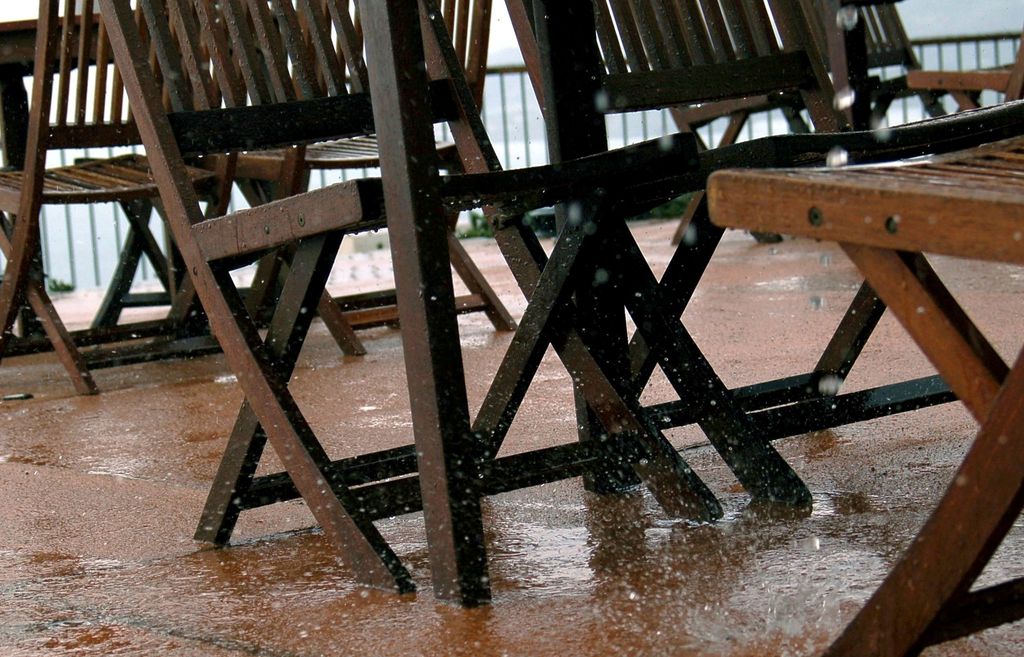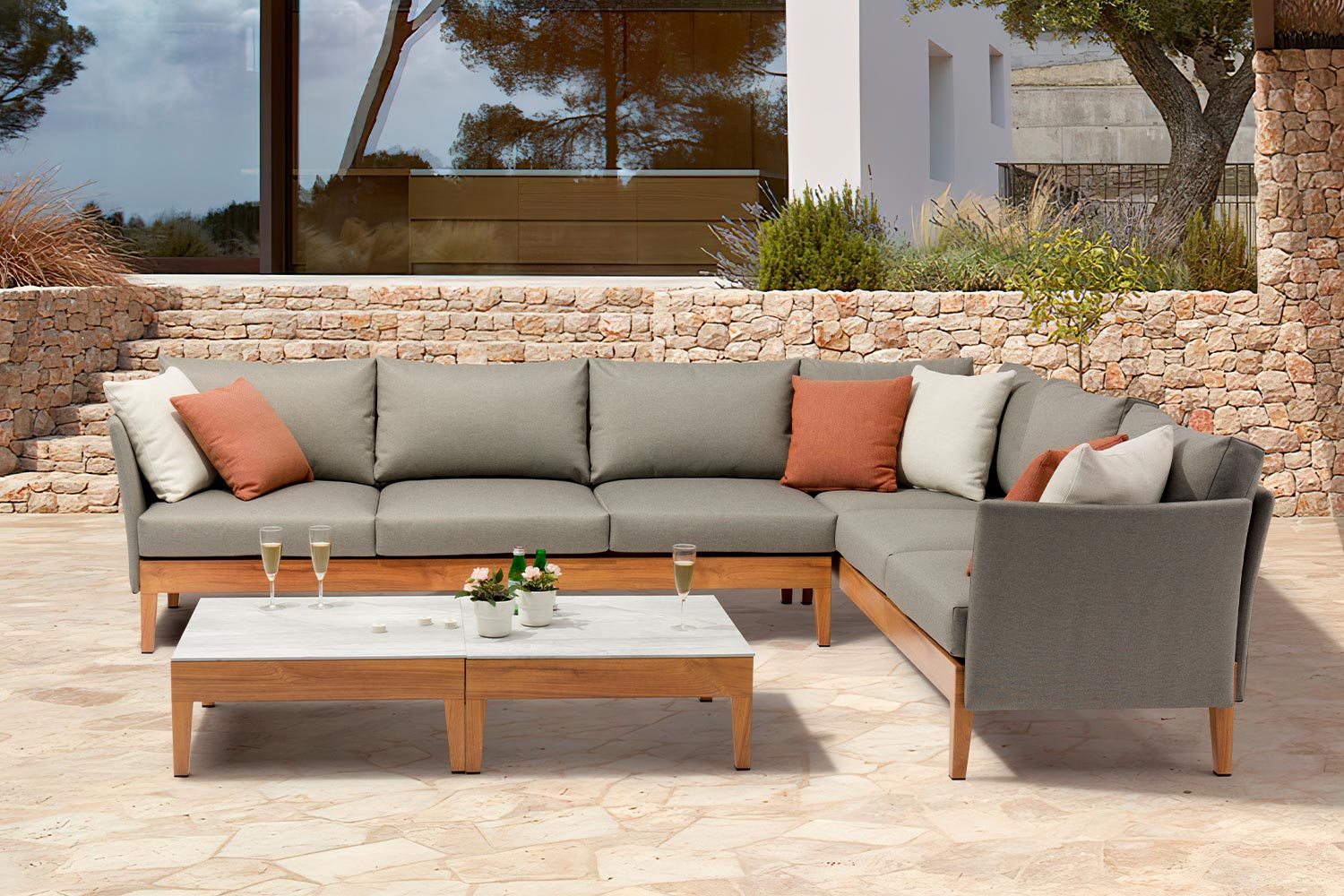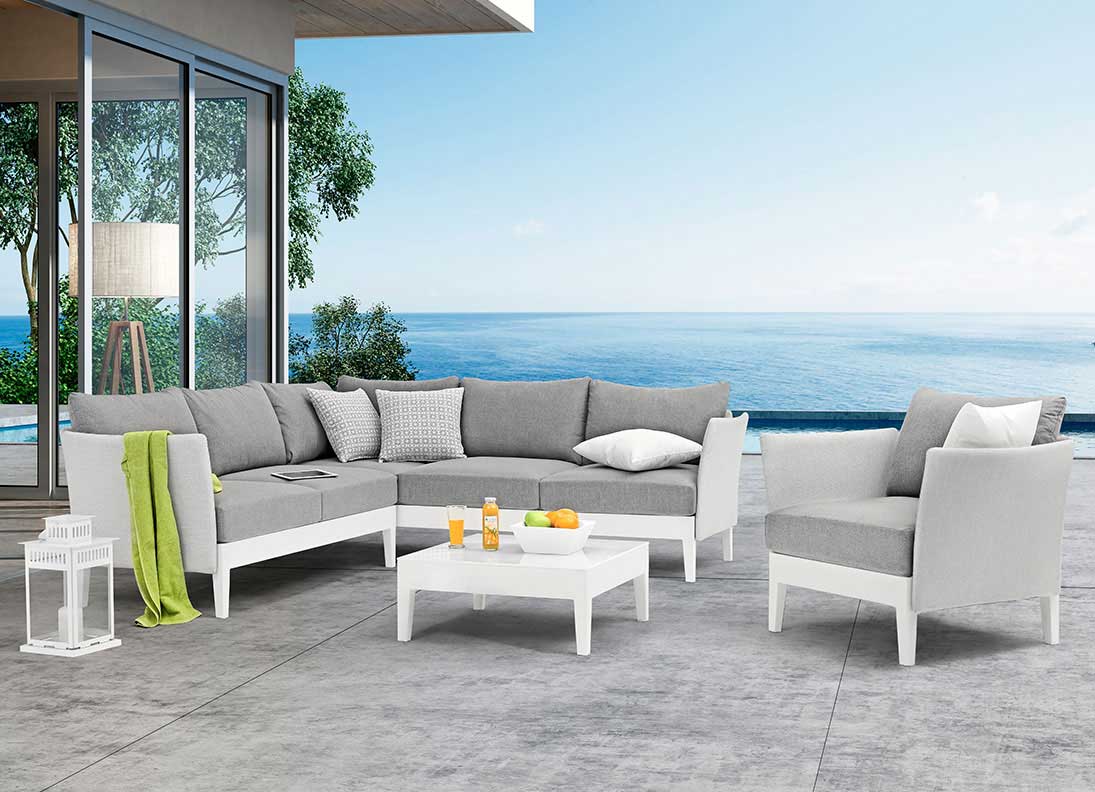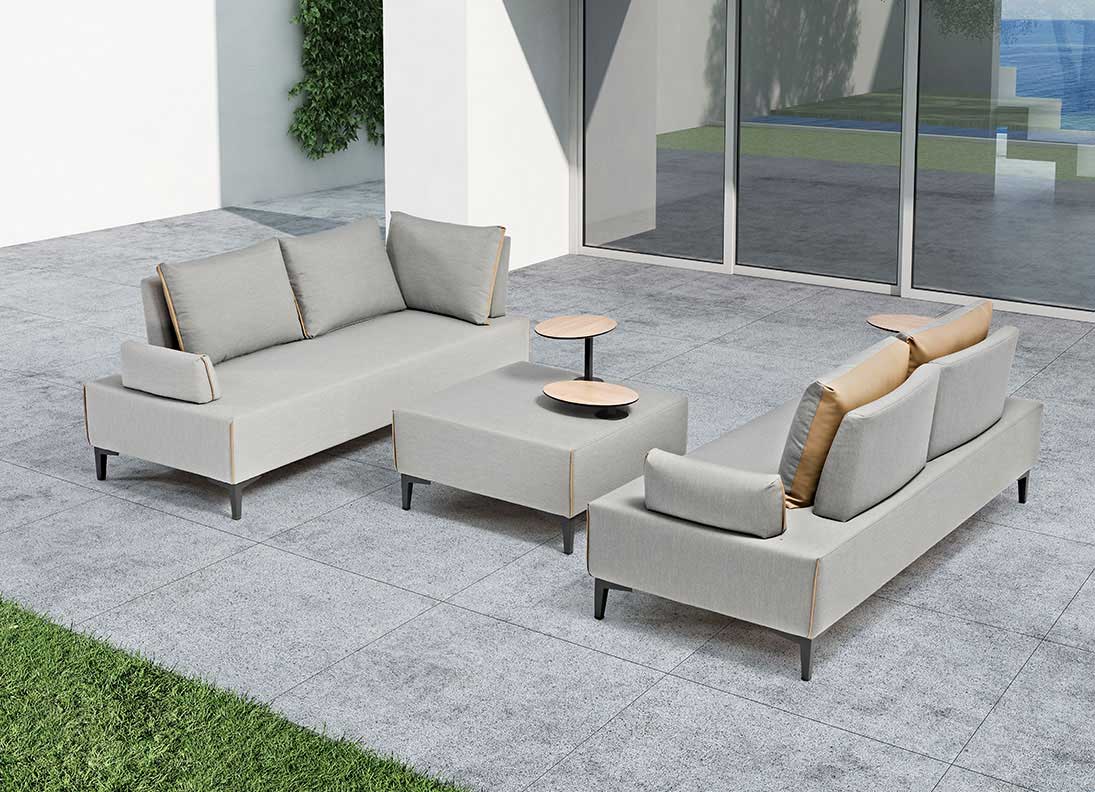Can outdoor furniture get wet?
Outdoor furniture is designed to withstand various weather conditions, but can it really handle getting wet? In this article, we will explore the impact of water on outdoor furniture and provide tips on choosing the right furniture for wet environments, protecting it from rain and moisture, and cleaning and maintaining it when exposed to water. Whether you have a patio, deck, or garden, understanding how water can affect your outdoor furniture will help you make informed decisions to ensure its longevity and functionality.
Key Takeaways
Choosing water-resistant materials is important for outdoor furniture
Water can cause damage to outdoor furniture, such as rust and mold growth
Regular maintenance and protective measures can help prevent water damage
Waterproof furniture is more suitable for wet environments than water-resistant furniture
Factors to consider when selecting outdoor furniture for wet environments include material, durability, and ease of maintenance
Understanding the Impact of Water on Outdoor Furniture
The Importance of Choosing Water-Resistant Materials
When it comes to outdoor furniture, choosing water-resistant materials is crucial. Water-resistant materials are designed to withstand exposure to water and moisture without getting damaged. They are specially treated or made from materials that naturally repel water, such as teak, aluminum, or synthetic wicker.
By opting for water-resistant materials, you can ensure that your outdoor furniture will last longer and maintain its appearance even when exposed to rain, humidity, or accidental spills. Additionally, water-resistant materials are less prone to mold, mildew, and rot, which can cause significant damage to furniture.
To help you make an informed decision, here are some factors to consider when selecting water-resistant outdoor furniture:
Durability: Choose materials that are known for their durability and ability to withstand outdoor conditions.
Maintenance: Consider the level of maintenance required to keep the furniture in good condition.
Style: Look for materials that complement your outdoor aesthetic and personal preferences.
Remember, investing in water-resistant outdoor furniture is an investment in the longevity and durability of your outdoor living space.
How Water Can Damage Outdoor Furniture
Water can have a detrimental effect on outdoor furniture if proper precautions are not taken. One of the main ways water can damage outdoor furniture is through rust. Metal furniture, such as iron or steel, is particularly susceptible to rust when exposed to water for extended periods of time. Rust not only weakens the structure of the furniture but also creates unsightly stains and discoloration.
Another way water can damage outdoor furniture is through wood rot. Wooden furniture, especially if it is not properly sealed or treated, can absorb water and become susceptible to rot. This can lead to the furniture becoming weak, unstable, and eventually unusable.
Additionally, water can cause mold and mildew to grow on outdoor furniture. Mold and mildew thrive in damp environments and can quickly spread on furniture that is constantly exposed to water. Not only does mold and mildew create an unpleasant appearance, but it can also cause health issues for those who come into contact with it.

Preventing Water Damage: Maintenance and Protective Measures
To ensure the longevity of your outdoor furniture and protect it from water damage, regular maintenance and protective measures are essential. Here are some important steps you can take:
Clean and Dry: Regularly clean your outdoor furniture to remove dirt, debris, and moisture. Use a mild soap and water solution and a soft brush or cloth. After cleaning, make sure to thoroughly dry the furniture to prevent water from seeping into the materials.
Apply Protective Coatings: Consider applying protective coatings or sealants to your outdoor furniture. These coatings can provide an extra layer of protection against water damage and help prolong the lifespan of your furniture.
Cover or Store: When not in use, it's important to cover or store your outdoor furniture properly. Use weather-resistant covers or store the furniture in a dry, covered area to protect it from rain, snow, and other moisture.
Inspect for Damage: Regularly inspect your outdoor furniture for any signs of damage or wear. Address any issues promptly to prevent further damage and ensure the longevity of your furniture.
By following these maintenance and protective measures, you can keep your outdoor furniture in great condition and enjoy it for years to come.
Choosing the Right Outdoor Furniture for Wet Environments
Waterproof vs. Water-Resistant: What's the Difference?
When it comes to outdoor furniture, understanding the difference between waterproof and water-resistant is crucial. Waterproof furniture is designed to completely repel water, preventing any moisture from seeping into the material. On the other hand, water-resistant furniture is able to withstand some exposure to water, but it may not be completely impervious to moisture.
It's important to consider your specific needs and the climate in which you live when choosing between waterproof and water-resistant outdoor furniture. If you live in an area with frequent rain or high humidity, investing in waterproof furniture may be the best option to ensure long-lasting durability and protection against water damage.
Here are some key points to keep in mind when comparing waterproof and water-resistant outdoor furniture:
Waterproof furniture provides the highest level of protection against water damage.
Water-resistant furniture can withstand some exposure to water, but may require additional maintenance and care.
Waterproof furniture is typically made from materials such as teak, aluminum, or synthetic wicker, which are naturally resistant to water.
Water-resistant furniture may have a protective coating or treatment to enhance its resistance to water.
Remember, choosing the right outdoor furniture for wet environments is essential to ensure its longevity and performance.
Best Materials for Outdoor Furniture in Wet Conditions
When it comes to choosing outdoor furniture for wet environments, it is crucial to select materials that can withstand exposure to water. Waterproof and water-resistant materials are the top choices for outdoor furniture in wet conditions. Here are some of the best materials to consider:
Teak: Known for its natural resistance to water, teak is a popular choice for outdoor furniture. It is durable, low-maintenance, and has a beautiful appearance.
Aluminum: Aluminum furniture is lightweight, rust-resistant, and can withstand rain and moisture. It is also easy to clean and maintain.
Wrought Iron: Wrought iron furniture is highly durable and can withstand harsh weather conditions, including rain and humidity.
These materials are not only resistant to water but also offer durability and longevity, making them ideal for outdoor furniture in wet environments.
Factors to Consider When Selecting Outdoor Furniture for Wet Environments
When choosing outdoor furniture for wet environments, there are several factors to consider. First and foremost, durability is key. The furniture should be able to withstand exposure to water without deteriorating or becoming damaged. Additionally, water resistance is important to prevent moisture from seeping into the furniture and causing mold or mildew growth. Another factor to consider is maintenance. Some materials may require more upkeep than others to keep them in good condition. Finally, style is also a consideration. You want your outdoor furniture to not only be functional and practical but also aesthetically pleasing.
Protecting Outdoor Furniture from Rain and Moisture
Covering Outdoor Furniture: Tarps, Covers, and Umbrellas
When it comes to protecting your outdoor furniture from rain and moisture, covering them with tarps, covers, or using umbrellas can be highly effective. These protective measures create a barrier between the furniture and the water, preventing direct contact and reducing the risk of damage. Tarps and covers are particularly useful for larger furniture pieces, such as dining sets or lounge chairs, as they can fully cover the entire surface. Umbrellas, on the other hand, are great for providing shade and shelter to smaller furniture items like side tables or outdoor decor. By using these coverings, you can prolong the lifespan of your outdoor furniture and keep them looking their best.
.jpg)
Proper Storage and Placement During Wet Seasons
During wet seasons, it is crucial to properly store and place your outdoor furniture to prevent water damage and prolong its lifespan. Here are some tips to help you protect your furniture:
Drying Techniques for Wet Outdoor Furniture
After a heavy rain or exposure to moisture, it's important to properly dry your outdoor furniture to prevent damage and prolong its lifespan. Here are some effective drying techniques:
Air drying: If the weather permits, leave your furniture outside in a well-ventilated area to air dry naturally. This allows the moisture to evaporate without causing any further damage.
Towel drying: Use absorbent towels to remove excess water from the furniture. Gently pat the surfaces to soak up the moisture. This method is particularly useful for smaller items or cushions.
Sun drying: If the sun is shining, take advantage of its natural heat and UV rays to speed up the drying process. However, be cautious with certain materials that may be sensitive to prolonged sun exposure.
Using a fan: Set up a fan near the wet furniture to enhance air circulation and facilitate drying. This method can be especially helpful for larger pieces or areas with limited ventilation.
Remember, thorough drying is crucial to prevent mold, mildew, and other forms of water damage. By following these techniques, you can ensure that your outdoor furniture stays in great condition even after being exposed to water.
Cleaning and Maintaining Outdoor Furniture Exposed to Water
Removing Mold, Mildew, and Stains
Mold, mildew, and stains can be a common problem for outdoor furniture that is exposed to water. These issues not only affect the appearance of the furniture but can also lead to deterioration and damage over time. To effectively remove mold, mildew, and stains from outdoor furniture, follow these steps:
Inspect the furniture for any visible signs of mold, mildew, or stains. Pay attention to areas that are prone to moisture accumulation, such as corners and crevices.
Prepare a cleaning solution by mixing warm water with a mild detergent or bleach. Use a ratio of 1 part detergent/bleach to 10 parts water.
Scrub the affected areas using a soft brush or sponge. Apply the cleaning solution and gently scrub in a circular motion.
Rinse the furniture thoroughly with clean water to remove any residue from the cleaning solution.
Dry the furniture completely before using or storing it. Ensure that all surfaces are dry to prevent the growth of mold and mildew.
By regularly inspecting and cleaning your outdoor furniture, you can prevent mold, mildew, and stains from becoming a major issue.
Regular Cleaning and Maintenance Tips
Regular cleaning and maintenance are essential for keeping your outdoor furniture in good condition. Here are some tips to help you keep your furniture looking its best:
Clean regularly: Regularly clean your outdoor furniture to remove dirt, dust, and debris. Use a mild soap and water solution to gently scrub the surfaces. Rinse thoroughly and allow the furniture to dry completely before using or storing.
Inspect for damage: Regularly inspect your outdoor furniture for any signs of damage, such as cracks, rust, or loose screws. Address any issues promptly to prevent further damage.
Protect from the elements: When not in use, cover your outdoor furniture with a waterproof cover or store it in a protected area. This will help protect it from rain, snow, and other harsh weather conditions.
Avoid harsh chemicals: Avoid using harsh chemicals or abrasive cleaners on your outdoor furniture, as they can damage the finish or material. Stick to mild soap and water for regular cleaning.
Apply protective coatings: Consider applying a protective coating or sealant to your outdoor furniture to help prolong its lifespan. This can help protect against moisture, UV rays, and other environmental factors.
Remember, proper cleaning and maintenance will help extend the life of your outdoor furniture and keep it looking great for years to come.
Applying Protective Coatings and Sealants
Applying protective coatings and sealants is an essential step in maintaining the longevity and durability of outdoor furniture exposed to water. These coatings create a barrier that helps prevent water penetration and minimize the risk of damage. Regular application of protective coatings can significantly extend the lifespan of your outdoor furniture.
To ensure effective protection, it is important to choose the right type of coating or sealant for your specific furniture material. Some common options include waterproof sealants, polyurethane coatings, and marine-grade varnishes. These products are designed to withstand exposure to moisture and provide a protective layer that helps repel water.
In addition to protecting against water damage, coatings and sealants can also enhance the appearance of your outdoor furniture. They can add a glossy finish, deepen the color, and provide UV protection to prevent fading.
When applying protective coatings and sealants, it is important to follow the manufacturer's instructions and apply them in a well-ventilated area. Make sure to clean and dry the furniture thoroughly before application to ensure proper adhesion and effectiveness.
Here are some key points to consider when applying protective coatings and sealants:
Choose a coating or sealant that is compatible with your furniture material.
Apply multiple thin coats rather than one thick coat for better coverage and durability.
Allow each coat to dry completely before applying the next one.
Use a brush, roller, or sprayer to apply the coating evenly.
Pay attention to hard-to-reach areas and ensure they are adequately coated.
Remember, regular maintenance and reapplication of protective coatings and sealants are necessary to keep your outdoor furniture in optimal condition and protect it from the damaging effects of water.
Conclusion
In conclusion, outdoor furniture is designed to withstand exposure to the elements, including getting wet. However, it is important to properly maintain and protect the furniture to ensure its longevity. Regular cleaning, applying protective coatings, and storing the furniture during extreme weather conditions can help extend its lifespan. So, whether it's a sudden rain shower or a poolside splash, your outdoor furniture can handle it with ease.
Frequently Asked Questions
Can outdoor furniture get wet?
Yes, outdoor furniture can get wet. However, the impact of water on outdoor furniture depends on the materials used and how well it is protected.
What are the best materials for outdoor furniture in wet conditions?
Some of the best materials for outdoor furniture in wet conditions include teak, aluminum, stainless steel, and synthetic wicker. These materials are resistant to water damage and can withstand exposure to rain and moisture.
How can I prevent water damage to outdoor furniture?
To prevent water damage, it is important to choose water-resistant materials for outdoor furniture. Regular maintenance, such as cleaning and applying protective coatings, can also help protect against water damage.
Should I cover my outdoor furniture during wet seasons?
Covering outdoor furniture during wet seasons can provide additional protection against rain and moisture. Tarps, covers, and umbrellas are commonly used to cover outdoor furniture and prevent water damage.
How do I clean outdoor furniture exposed to water?
To clean outdoor furniture exposed to water, use a mild detergent and water solution. Scrub the furniture gently with a soft brush or sponge, and rinse thoroughly. Regular cleaning can help remove mold, mildew, and stains caused by water exposure.
Can I apply protective coatings or sealants to outdoor furniture?
Yes, applying protective coatings or sealants to outdoor furniture can help enhance its water resistance. These coatings create a barrier that prevents water from seeping into the furniture and causing damage.
 Previous:
Top 20 Outdoor Furniture Brands of 2024
Previous:
Top 20 Outdoor Furniture Brands of 2024



.jpg)






